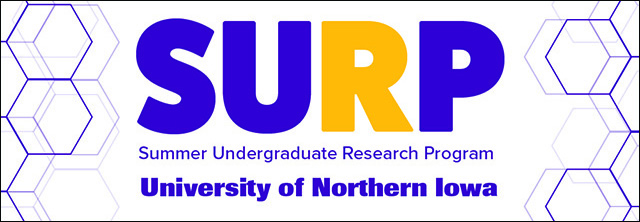
2020 Summer Undergraduate Research Program (SURP) Symposium
Presentation Type
Open Access Presentation
Document Type
poster
Keywords
Prairie restoration; Prairie plants--Seeds--Protection;
Abstract
Tallgrass prairie used to cover Iowa and much of the midwest– now only a small percentage of it remains. Many prairie restoration efforts are in place, but native prairie seed prices are high and seedling establishment is low. We tested how inexpensive sacrificial seed impacts the establishment of native seedlings. After planting a field with native prairie seed, we marked out six test plots and applied treatment (sacrificial seed) to three of them. We counted and evaluated the number of emerged seedlings per m2 after 4.5 months. We saw no differences in emerged seedlings per m2 between the plots with sacrificial seed and the plots without. We also made many seedcards (30 seeds glued to sandpaper) to assess how prevalent granivory was. We compared the amount of seeds lost in the open field to the amount of seeds lost in a control cage to account for losses due to weather. We found that in all of the plots, over 90% of the seeds were removed from the seedcards. After analyzing the seedcard data further and evaluating three separate levels of grainivore exclusion, we can tentatively say roughly 30% of seeds were removed by small mammals, birds, and earthworms; roughly 55% of seeds were removed by insects; and roughly 3% of seeds were removed by weather. This data showed that seed predation is widespread and more research needs to be gathered on the use of sacrificial seed in prairie restoration.
Start Date
31-7-2020 1:00 PM
End Date
31-7-2020 3:30 PM
Event Host
Summer Undergraduate Research Program, University of Northern Iowa
Faculty Advisor
Laura Jackson
Faculty Advisor
Laura Jackson
Department
Department of Biology
Department
Tallgrass Prairie Center
Copyright
©2020 Jacey Meier, Isabella Betzer, and Laura Jackson
File Format
application/pdf
Recommended Citation
Meier, Jacey; Betzer, Isabella; and Jackson, Laura, "Sacrificial seed’s impact on native seedling establishment in prairie restoration" (2020). Summer Undergraduate Research Program (SURP) Symposium. 5.
https://scholarworks.uni.edu/surp/2020/all/5
Sacrificial seed’s impact on native seedling establishment in prairie restoration
Tallgrass prairie used to cover Iowa and much of the midwest– now only a small percentage of it remains. Many prairie restoration efforts are in place, but native prairie seed prices are high and seedling establishment is low. We tested how inexpensive sacrificial seed impacts the establishment of native seedlings. After planting a field with native prairie seed, we marked out six test plots and applied treatment (sacrificial seed) to three of them. We counted and evaluated the number of emerged seedlings per m2 after 4.5 months. We saw no differences in emerged seedlings per m2 between the plots with sacrificial seed and the plots without. We also made many seedcards (30 seeds glued to sandpaper) to assess how prevalent granivory was. We compared the amount of seeds lost in the open field to the amount of seeds lost in a control cage to account for losses due to weather. We found that in all of the plots, over 90% of the seeds were removed from the seedcards. After analyzing the seedcard data further and evaluating three separate levels of grainivore exclusion, we can tentatively say roughly 30% of seeds were removed by small mammals, birds, and earthworms; roughly 55% of seeds were removed by insects; and roughly 3% of seeds were removed by weather. This data showed that seed predation is widespread and more research needs to be gathered on the use of sacrificial seed in prairie restoration.




